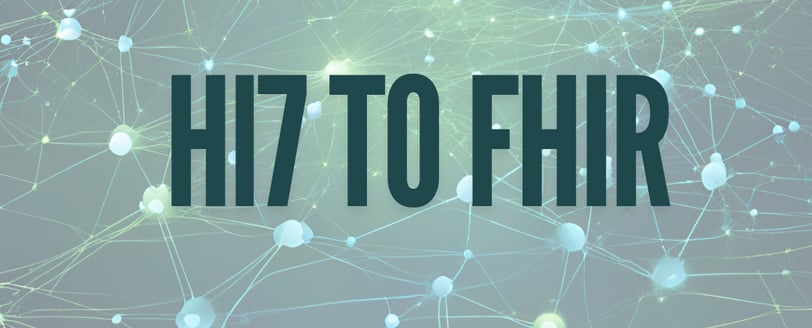HL7 to FHIR Transformation: Navigating the Future of Healthcare Interoperability
Blog post description.
12/24/20242 min read


In the rapidly evolving landscape of healthcare IT, data interoperability has become a critical necessity. Health Level Seven (HL7) and Fast Healthcare Interoperability Resources (FHIR) are two pivotal standards facilitating seamless data exchange. This blog delves into the technical intricacies of transforming HL7 messages to FHIR resources, highlighting key differences, tools, and best practices.
Understanding HL7 and FHIR:
HL7 v2 and v3:
HL7 v2, a widely adopted standard, enables healthcare applications to communicate through defined message structures. HL7 v3, though less prevalent, employs a more complex XML-based format.
FHIR Overview:
FHIR, developed by HL7 International, is a modern standard designed to leverage web technologies (RESTful APIs, JSON, XML) for efficient data exchange. It addresses limitations of previous standards, offering a more flexible and scalable approach.
Differences Between HL7 and FHIR:
Data Format:
HL7 v2 uses a pipe-separated format, while FHIR employs JSON/XML. This transition necessitates careful data mapping and transformation.
Interoperability Approach:
HL7 relies on messages and segments, whereas FHIR focuses on resources and APIs, promoting more granular and modular data exchange.
HL7 to FHIR Transformation Process:
Mapping HL7 Segments to FHIR Resources:
Identify equivalent FHIR resources for each HL7 segment. For instance, map HL7’s PID (Patient Identification) segment to the FHIR Patient resource.
Data Normalization:
Ensure consistent data formats. For example, normalize date and time formats to comply with FHIR standards.
Custom Extensions:
FHIR allows custom extensions for data not directly translatable from HL7. Use these extensions to retain valuable information.
Tools and Technologies:
Mirth Connect:
An open-source integration engine that supports HL7 to FHIR transformations through custom scripts and plugins. Use JavaScript and Mirth’s XML capabilities for data mapping.
HAPI FHIR:
A comprehensive Java library for FHIR that provides tools for parsing, validating, and transforming data. Ideal for building custom transformation solutions.
FHIR Mapping Language (FML):
A specialized language designed to facilitate the mapping of HL7 v2 messages to FHIR resources. Leverage FML for streamlined transformation processes.
Best Practices:
Validation:
Use FHIR validators to ensure transformed data complies with FHIR standards. Address any discrepancies promptly.
Testing:
Conduct rigorous testing in a sandbox environment before deploying transformations to production. Use sample data to simulate real-world scenarios.
Documentation:
Maintain comprehensive documentation of mapping rules, custom extensions, and transformation logic. This aids in troubleshooting and future updates.
Transforming HL7 messages to FHIR resources is a crucial step toward achieving true interoperability in healthcare. By understanding the differences between these standards, leveraging the right tools, and following best practices, healthcare IT professionals can ensure a smooth and effective transition. Embrace the future of healthcare data exchange with confidence, knowing that the path to interoperability is paved with well-defined standards like HL7 and FHIR.
About SynFini Solutions:
At SynFini Solutions, we specialize in healthcare IT solutions that drive interoperability and data integration. Our expertise in HL7 and FHIR ensures that your healthcare data flows seamlessly, empowering better patient care and operational efficiency. Please reach us on contact@synfinisolutions.com
#synfinisolutions #hl7tofhir #hl7 #fhir #interoperability
Syn
Connecting healthcare IT systems with robust solutions.
Support
contact@synfinisolutions.com
© 2024. All rights reserved.
